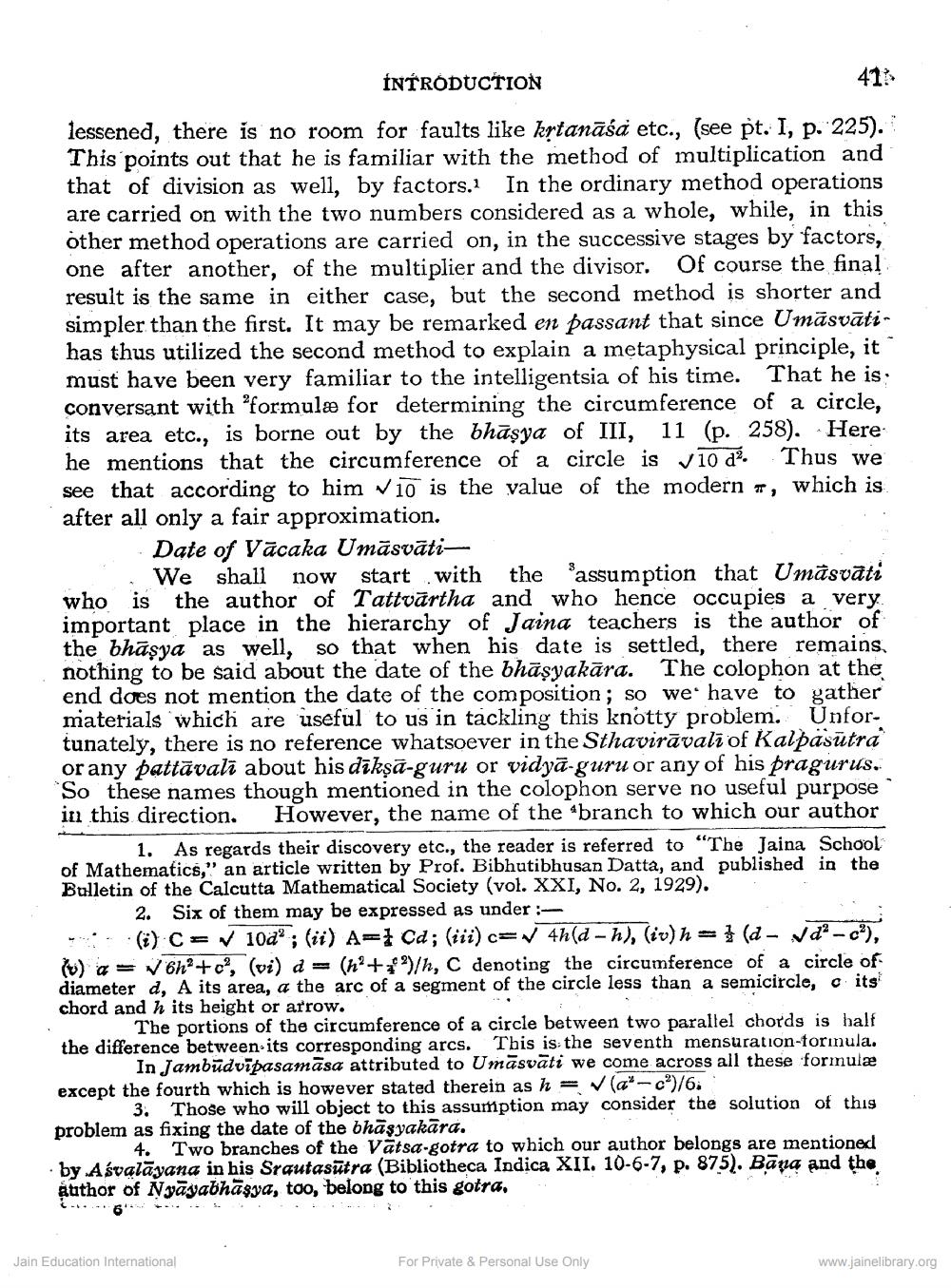________________
INTRODUCTION
413
lessened, there is no room for faults like krtanāśa etc., (see pt. I, p. 225). This points out that he is familiar with the method of multiplication and that of division as well, by factors. In the ordinary method operations are carried on with the two numbers considered as a whole, while, in this other method operations are carried on, in the successive stages by factors, one after another, of the multiplier and the divisor. Of course the final result is the same in either case, but the second method is s simpler than the first. It may be remarked en passant that since Umāsvātihas thus utilized the second method to explain a metaphysical principle, it must have been very familiar to the intelligentsia of his time. That he is: conversant with 'formulæ for determining the circumference of a circle, its area etc., is borne out by the bhāşya of III, 11 (p. 258). Here he mentions that the circumference of a circle is v10 d. Thus we see that according to him v 10 is the value of the modern #, which is after all only a fair approximation.
Date of Vācaka Umāsvāti
We shall now start with the assumption that Umāsvāti who is the author of Tattvārtha and who hence occupies a very important place in the hierarchy of Jaina teachers is the author of the bhāsya as well, so that when his date is settled, there remains. nothing to be said about the date of the bhāşyakāra. The colophon at the end does not mention the date of the composition; so we have to gather materials which are useful to us in tackling this knotty problem. Unfortunately, there is no reference whatsoever in the Sthavirāvali of Kalpasūtra or any pattāvală about his dīksā-guru or vidyā-guru or any of his pragurus. So these names though mentioned in the colophon serve no useful purpose in this direction. However, the name of the branch to which our author
1. As regards their discovery etc., the reader is referred to "The Jaina School of Mathematics, an article written by Prof. Bibhutibhusan Datta, and published in the Bulletin of the Calcutta Mathematical Society (vol. XXI, No. 2, 1929). .
2. Six of them may be expressed as under :
(0) C= 102" ; (ii) A=3 Cd; (iii) c= 4h(d - h), (iv)h = }(d - da-c"), (u) = 76h2 +0, (vi) d = (h+ )/h, C denoting the circumference of a circle of diameter d, A its area, a the arc of a segment of the circle less than a semicircle, cits chord and h its height or arrow.
The portions of the circumference of a circle between two parallel chords is half the difference between its corresponding arcs. This is the seventh mensuration-torinula.
In Jambūdvipasamāsa attributed to Umāsvāti we come across all these formulæ except the fourth which is however stated therein as h = Vasco)/6.
3. Those who will object to this assumption may consider the solution of this problem as fixing the date of the bhāsyakāra.
4. Two branches of the Vatsa-gotra to which our author belongs are mentioned by Aśvalāyana in his Srautasūtra (Bibliotheca Indica XII. 10-6-7, p. 875). Bāna and the author of Nyāyabhāşya, too, belong to this gotra,
Jain Education International
For Private & Personal Use Only
www.jainelibrary.org




